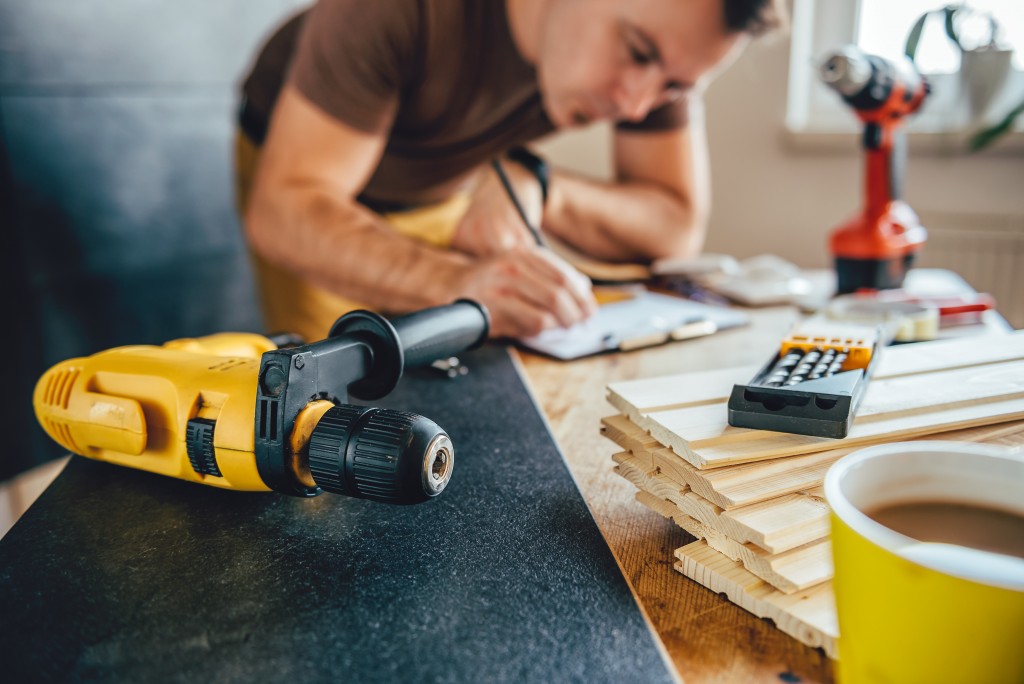Home improvement projects are a great way to spend the time productively. You can pick up new skills. It can help make your house look better and more organized. It’s also a good way to maximize space in your home. Along with its benefits, there are also downsides. Lack of preparation can cause damages and unfortunate accidents. It could also make the process way slower. Follow these measures for a safe and efficient project:
Clean, Clean, Clean
Cleaning should always be done before you start on a project. Don’t forget to sweep or hire carpet cleaners to prep the floor. You should also wipe the walls and rearrange the furniture. Whether you plan to install floating shelves or apply a new coat of paint, it’s essential to clean. Otherwise, it might trap the dirt beneath the paint or between the new furniture. When ignored for too long, dirt can cause discoloration and deformation. You might also slip because of the dust and sustain injuries.
It would also be more difficult to work with a cluttered and unorganized area. There won’t be enough space for you to move around. When there are so many obstructions, it would be harder to mount a cabinet or apply paint evenly. Besides, you might also accidentally knock off a fragile object. It would get glass or ceramic pieces everywhere which is not only dangerous but would lengthen your working time.
Besides your working area, you should also make sure your tools are pristine. If you let dirt build up inside, it would cause them to break or not work as well as it should. They would also be harder to use and cause unnecessary accidents. This is especially true for drills and power tools for wood because they accumulate a lot of dust. You can use a heavy-duty cleaner to make sure the tools are speckles. For spots that are hard to reach, you can use a vacuum.
Wear the Right Clothes
It’s easy to assume that wearing old clothes is enough for a DIY project at home. No one’s going to see you and it would be ok if it got stained. But the wrong clothes can make it harder for you to work and can even be potentially dangerous. You should avoid wearing loose jackets or sweatshirts because it might get caught in the tools.
Your attire depends on what you’re going to be working on. If you’re going to be painting your walls, it’s best to cover up from head to toe. If you have to use a ladder or do some heavy lifting for your task, wear non-slip shoes. For woodwork or any messy project, don safety goggles. A lot of DIY projects require the use of power tools which make a lot of noise. The CDC recommends using earplugs or earmuffs to reduce the chances of hearing loss.
If you’re going to be working on your roof or yard, don’t forget to protect yourself from sun damage. Experts recommend sunscreen with at least 15 SPF that covers both UVA and UVB. If the temperature outside isn’t too high, consider wearing a hat with wide brims or a long-sleeved shirt.
Some projects will have you working near wires or cables. For such instances, it’s best to take precaution and wear the appropriate clothes. Look for shirts and pants made of polyester, nylon, wool, and other fabrics that don’t easily burn.
Prepare a First Aid Kit

One of the best things about DIY home projects is the savings in labor cost. On the other hand, there’s also a downside. There’s always a chance for accidents. Whether you’re a beginner or have extensive experience, mistakes are bound to happen. While you can’t completely cut the chances of injuries or damage, you can prepare for it.
You should always have a fully-stocked first aid kit. Make sure that it has everything you’ll need in an emergency, from burns to wounds. Figures show that 44% of Americans don’t have a first aid kit. This is bad because emergency kits can help you treat bruises and even save lives. The best thing about it is that they’re useful for all sorts of urgent events, not just injuries from home projects.
For serious injuries, don’t hesitate to call a medical professional. Have the contact details of medical helplines and your doctor stored in your home and your phone.
A lot of home projects can appear quick and easy but there’s always a possibility for accidents. While mistakes are unavoidable, you can prepare for them better to prevent awful injuries.




